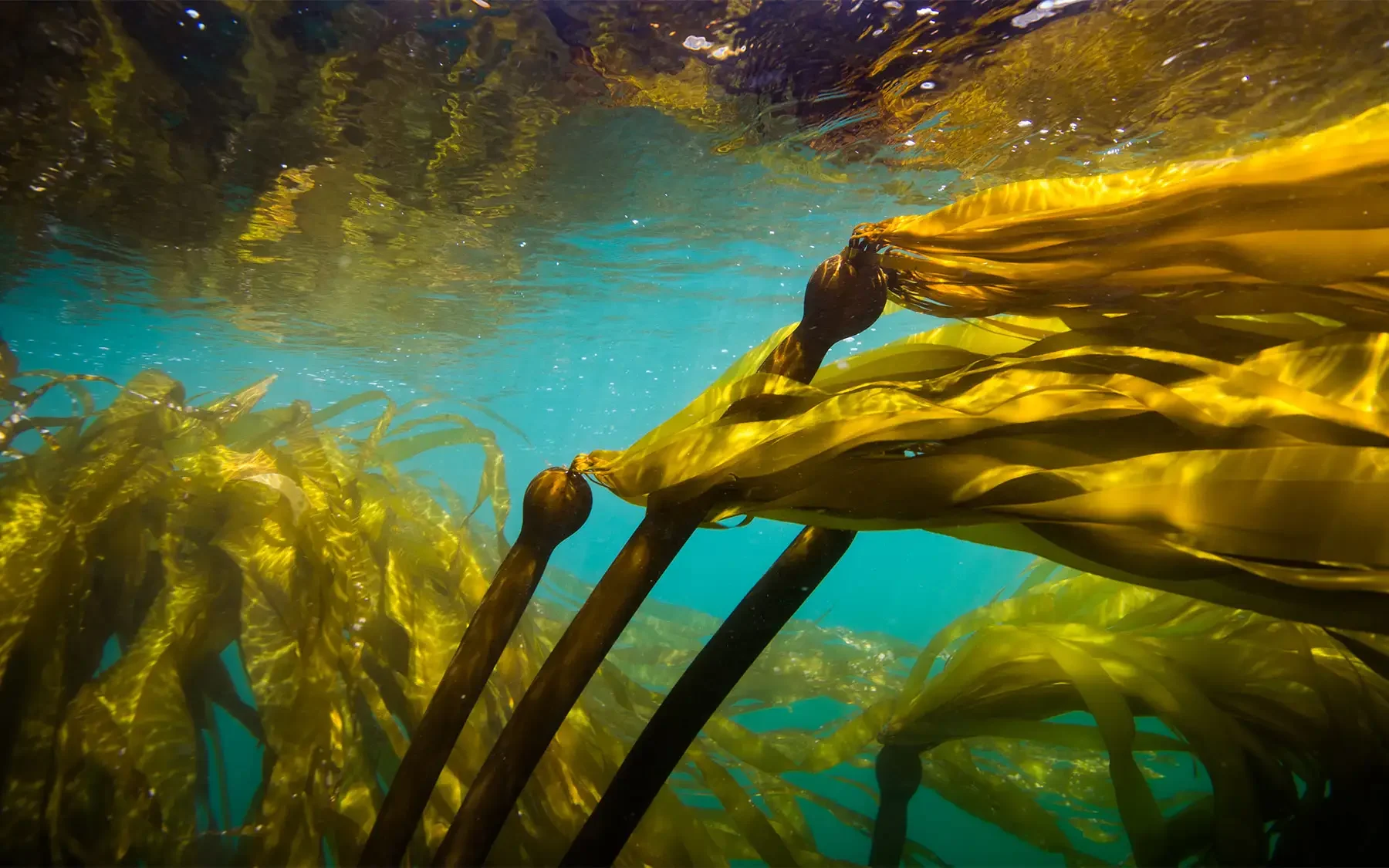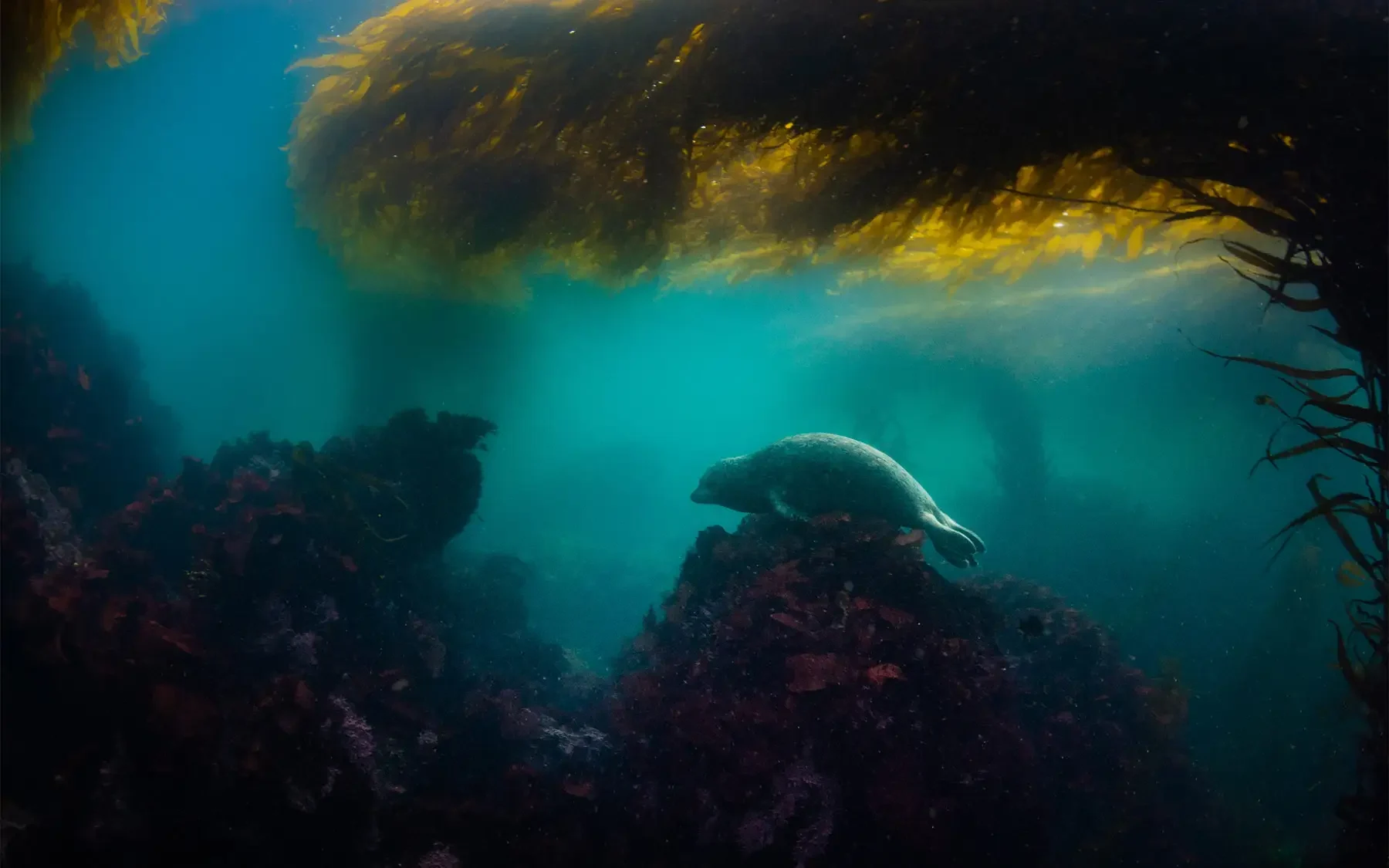For restoration to be effective, the cause of habitat decline must be understood and ameliorated (chapter 2). But this is problematic when climate change drives habitat loss, since it cannot be directly overcome before restoration (chapter 1) and will be an ongoing and persistent threat to kelp forests. Given the scale and rate of ongoing climate-change worldwide, there is growing recognition of the need to plan adaptively and ‘future-proof’ restoration interventions by ensuring that kelp forests can cope with future, and not just current, environmental conditions 1 2. Future-proofing can also help us buy time and manage kelp forests while governments pursue the urgent and crucial aim of reducing greenhouse gas emissions to curb ocean change. Nonetheless, even if emissions are rapidly reduced in the near future, there are still decades of warming and change locked in due to climate inertia and lags between today’s emissions and tomorrow’s climate 3. It is therefore critical to ensure that restoration interventions are as dynamic as the environments in which they occur.
Kelp forests are in decline in many regions globally due to direct and indirect impacts from climate change 4 5 Across these regions, climate change is outpacing the ability of kelps to adapt, while episodic events (e.g., marine heatwaves) and ongoing stressors (e.g., ocean warming) are eroding the adaptive capacity and genetic resilience of kelps 6 7 8. Proactive and innovative future-proofing strategies are therefore required for kelp forest restoration, and not only in the medium- to long-term but even short-term in those regions where climate-driven impacts are already causing kelp loss.
7.1 Future-proofing strategies
There are three general and intersecting strategies for future-proofing restoration interventions: genetic rescue, assisted gene flow, and genetic manipulation and assisted expansion 9 10 11. The optimal strategy will depend on the underlying vulnerability and adaptability of the kelp species under consideration. Moreover, these strategies are not mutually exclusive, and a combined or portfolio approach is often recommended. The fundamental goal of all strategies, however, is to facilitate and accelerate the rate of naturally occurring evolutionary processes in order to boost ecosystem resilience to future conditions and change. We describe these strategies here in approximate order of the severity of the intervention. While some approaches have been investigated at the research-scale for kelp forests, many are still hypothetical and under debate.
7.1.1 Genetic rescue
Diversity at the genetic level underpins any populations’ ability to respond to change. Yet many natural populations are now genetically degraded due to habitat fragmentation and loss. The strategy of ‘genetic rescue’ focuses on enhancing the genetic diversity of such populations to boost their adaptive potential and resilience to future conditions. This might include planting and restoring individuals from genetically diverse populations (but the same species) to disconnected or depauperate populations 12 13. Such populations may have been connected historically but since become isolated and degraded due to human impacts 14 15 16. This approach may be especially useful where there is no current direct climate-driven threat to a kelp forest and thus only limited climate-driven current selective pressure. Also see Sourcing and Provenance in chapter 5.3.
7.1.2 Assisted gene flow
Taking this a step further, an ‘assisted gene flow’ strategy focuses on the movement and restoration of naturally adapted or tolerant individuals into threatened populations in order to increase resilience to an identified stressor (e.g., ocean warming). This approach may suit circumstances with current or anticipated near-future climate-drivers of kelp forest loss, and where increasing genetic diversity (via genetic rescue) may be counter-productive and inefficient since selective pressure may instead favour (or require) a better adapted genotype 17 18 19. Selective-breeding approaches can be used to identify and breed the adapted or tolerant individuals to be used for restoration trials. Such approaches are already being considered/trialled in locations where climate-driven kelp losses have been particularly severe 20 21. Similar breeding techniques and cultivar development are more common among kelp aquaculture operations 22 and demonstrate the potential for knowledge-sharing and collaboration among the restoration and aquaculture sectors.
7.1.3 Genetic manipulation, assisted expansion, and novel communities
Other more extreme strategies to future-proof restoration efforts include sophisticated genetic techniques and those that assist a species’ expansion outside their native range. These might include genetic engineering to enhance or introduce specific traits 23 24 or the use of naturally occurring (or artificially stimulated) co-species ‘chimeras’ that are better adapted to novel conditions (Chile: Chimera trials). Assisted expansion, on the other hand, may aim to shift an at-risk species to a new, more suitable ‘refugia’ environment to aid its long-term persistence if it cannot survive in its current range. Alternatively, new species of kelp (or other seaweeds) that are better suited to future conditions might be restored instead. The intent there would be to create novel ecological communities to maintain the function of the ecosystem as a whole, rather than to maintain the presence of a particular kelp species 25.
7.2 Decision-making and planning for future-proofing
Evidence-informed dialogue and decision-making are critical to planning, developing, and achieving support for future-proofing solutions. The innovative nature of these approaches raises challenging scientific and ethical questions 26 27, since the intention is not to restore a pre-existing or historical community but instead to modify it to be more adapted and resilient to modern environmental conditions. Accordingly, the potential risks of action (e.g. maladaptation, genetic pollution) must be assessed alongside the current and potential risks of inaction and ongoing kelp loss 28. This balance of risks suggests future-proofing interventions may be more amenable where and when kelp forest losses have already been severe (or are predicted to be in the near-future) or may cause particularly damaging effects on ecological and human communities. This logic also highlights the potential of preventative and proactive future-proof restoration (i.e., taking action prior to severe losses) to boost resilience and ensure kelp forests do not experience such precipitous declines in the first place.
The decision-making and planning process for future-proof interventions must incorporate dialogue among researchers, practitioners, managers, policymakers, and the broader community 29 30 31. Critically, there must be community-wide input and consensus on how we want kelp forests to look and function in the future, and what services we want/need them to provide. Together, these considerations will dictate when and how to restore, whether future-proofed interventions are desired or required, and what type of intervention may be most suitable.
7.3 Knowledge gaps, and tools to support future-proofing
The design of future-proofing interventions relies on understanding patterns of overall and adaptive genetic diversity and gene flow among populations and also predicting how these may change under future conditions 32 33. Unfortunately, this knowledge is scant or absent for most kelp species, which impedes our understanding of a species’ adaptability/vulnerability and the pathways for potential restoration. In those cases, modelling and simulations can be useful to predict patterns of natural dispersal from desirable to vulnerable populations 34 or to evaluate environmental and biological factors and identify potentially resilient, vulnerable, or refugia populations of kelps 35 36. However, even where resilient individuals/populations have been identified 37 38, we currently have little understanding of the physiological mechanisms that underpin their improved performance and adaptation.
Considering ongoing kelp declines and the potential for genetic interventions to be combined with restoration efforts, there should be increased focus on the conservation of kelp genetic diversity via the use of seedbanks or genebanks 39 40 41. These can help preserve the genetic heritage and/or unique local-scale diversity, support future restoration and conservation efforts, and provide contingency in the case of severe environmental losses. As with selective breeding, these banking operations have significant crossover with kelp aquaculture operations and represent areas of high potential for collaboration and co-investment between kelp restoration and aquaculture sectors.
Ultimately, while careful planning and research are essential to the development and implementation of future-proofed kelp forest restoration, these actions must be considered alongside the risks of inaction. Even now, ‘pristine’ or undisturbed kelp forests may not exist, and there is increasing agreement that recreating past (or even present) communities can be challenging given the rate and scale of ongoing change in our oceans. It is therefore critical that we do not restore nostalgically but instead restore for the future and to ensure the long-term survival of the kelp forests we want and need.
7.4 Further reading
42 Coleman et al. 2020a, Restore or redefine: future trajectories for restoration.
43 Gaitán-Espitia & Hobday 2020, Climate change adaptation efforts for conserving species must not be antagonistic to natural evolutionary responses.
44 Goecke et al. 2020, Cultivar development of kelps for commercial cultivation—past lessons and future prospects.





